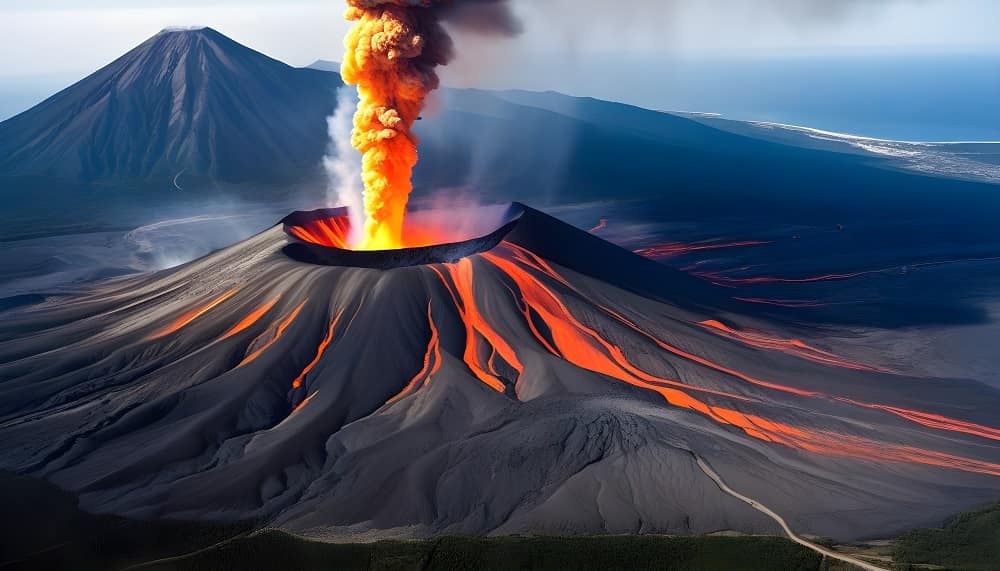"The Day the World Trembled" refers to a significant event in Earth's history known as the Toba supereruption. The Toba Caldera is a supervolcano located in Sumatra, Indonesia. The eruption occurred around 74,000 years ago and is considered one of the most powerful volcanic events in the last few million years.
In the cyclical rhythm of Earth's history, colossal volcanic eruptions punctuate approximately every million years. The most recent manifestation of this geological spectacle unfolded some 74,000 years ago on Sumatra, now nestled within the boundaries of Indonesia. This eruption unleashed a cataclysmic torrent, expelling rock ash and noxious gases in quantities dwarfing any previously recorded by scientific observations. The molten effluence birthed a vast crater, stretching over 100 kilometers, now transformed into a serene lake. The reverberations of Toba volcano's fury manifested in a rain of rock fragments over a staggering 2500 cubic kilometers. Swift westerly winds carried the volcanic ash to the Indian subcontinent, cloaking it beneath a somber blanket. The explosions saturated the upper atmospheric layers with sulfur gas, casting a haze that enshrouded the globe, obstructing the sunlight's unimpeded journey to Earth for a protracted half-decade. Dust clouds lingered, creating a volcanic winter reminiscent of its nuclear counterpart, albeit devoid of radiation's ominous presence.
Read:-The Mysterious Fog of 536 - The Worst Time In History To Be Alive
Here are some key points about the Toba Catastrophe Theory and the scale of the eruption:
1. Magnitude of the Eruption:
- The Toba eruption was a supervolcanic event, meaning it was an extremely large volcanic eruption with an ejecta volume greater than 1,000 cubic kilometers (240 cubic miles).
- The Toba eruption is estimated to have been about 5,000 times larger than the eruption of Mount St. Helens in 1980.
2. Environmental Impact:
- The eruption had global consequences, causing a volcanic winter by releasing massive amounts of volcanic ash, sulfur dioxide, and other aerosols into the atmosphere.
- The volcanic winter led to a significant drop in global temperatures, impacting the climate for several years.
3. Genetic Bottleneck:
- The Toba Catastrophe Theory proposes that the eruption had a profound impact on the human population at the time.
- Some scientists believe that the eruption may have caused a genetic bottleneck, reducing the human population to a small number of individuals.
4. Ice Core and Sediment Records:
- Evidence of the Toba eruption is found in ice core and sediment records, which show a distinct layer of ash and sulfuric acid corresponding to the time of the eruption.
5. Impact on Human Migration:
- The Toba eruption has been linked to changes in climate and vegetation, and some researchers suggest that it may have influenced human migration patterns and the adaptation of early Homo sapiens.
6. Ongoing Research and Debate:
- While the Toba Catastrophe Theory is widely accepted, there is ongoing research and debate about the exact impact of the eruption on the global climate, ecosystems, and human populations.
The Toba supereruption is a fascinating and significant event in Earth's geological history, providing insights into the complex interactions between volcanic activity, climate, and the evolution of life on our planet.













0 comments:
Post a Comment